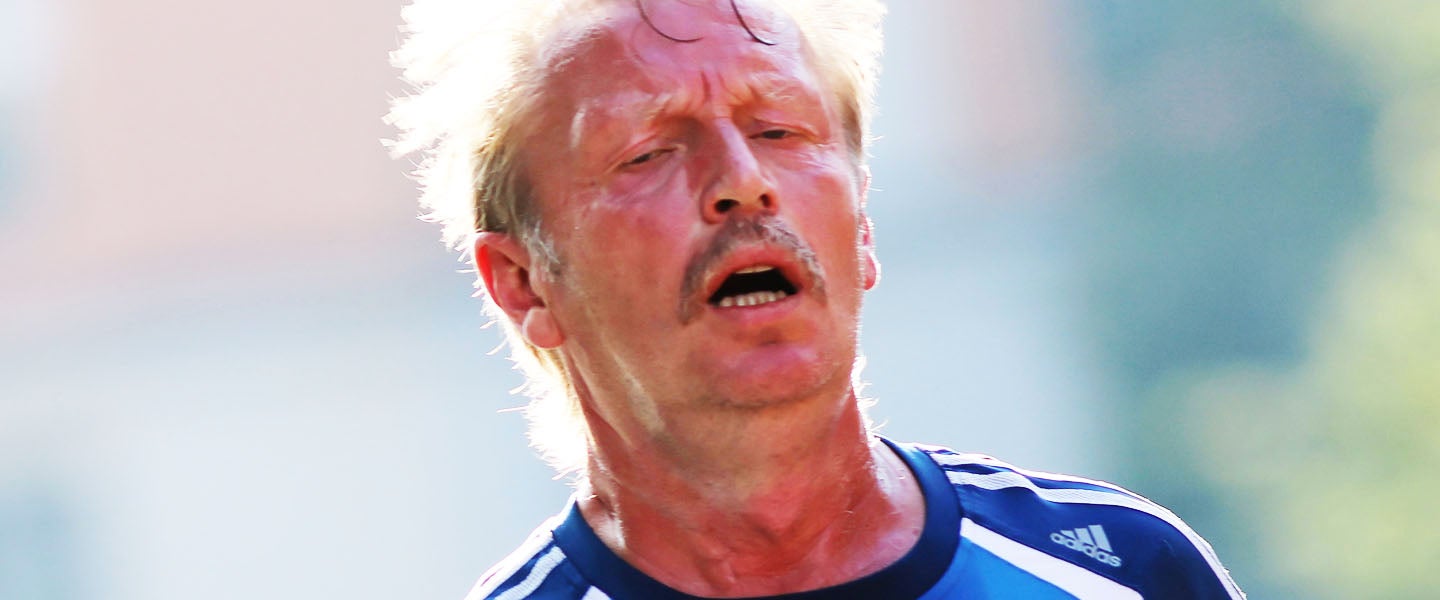For the last five months, I’ve averaged running about 20 miles a week. I’ve lost weight, I generally feel better, and I’ve even found some semblance of mindfulness after listening to Andy Puddicombe talk about being a monk while plugging his meditation app in Nike’s “Running With Headspace” program. I thought there were literally zero downsides to my newfound routine.
And then I came across “runner’s face,” the idea that the loss of fat from running makes runners’ faces look both “skeletal” and wrinkled. Great, another reason to hate myself!
The question “does running age my face” mostly appears in dedicated online running forums, like LetsRun.com and the subreddit r/running. But now I’m seeing the topic in the news, too. Will I get a “thin and gaunt” look from jogging too much? Will my wrinkles appear prematurely?
Just look at this painfully Photoshopped Instagram post by a Brazilian cosmetic surgeon!
Conveniently, articles about the dangers of runner’s face are typically accompanied by a push to sell anti-aging cream or a plastic surgeon fishing for new customers.
That’s why I’m here to separate fact from fiction. If runner’s face is an issue prevalent enough to be frequently broached in legitimate runner’s forums and semi-legitimate publications, couldn’t there be a modicum of truth to it? The snake oil may be fake, but what about the ailment?
Before I took one more stride above walking speed, I needed to make sure I wasn’t becoming Skeletor.
My mind was quickly put at ease after talking to Paul Ronto, a six-time marathon runner and content director at RunRepeat, a runner’s shoe review site. He’s never heard of runner’s face in his 15 years of dedicated running.
So what’s really going on?
We’re All Just Marching Toward Death
The leading theory behind runner’s face is that the up-and-down bouncing of runners’ strides causes skin on the face to “sag.” Ronto says this is being misconstrued for regular aging.
“I don’t think running causes your face to sag from the bouncing,” he says. “As adults get more and more into running, they age. Most avid runners are older, which most people don’t know, but the smallest age group involved in competitive running as a recreational sport is 16 to 25. There are much more middle- and late-age runners than young runners.”
Dr. Joshua Zuckerman, a board-certified plastic surgeon in New York City and avid runner himself, agrees, adding that a short stint of bouncing isn’t going to make your face sag anymore than gravity’s constant downward pull does already. “My wife and I are both running enthusiasts and haven’t really been concerned about facial ptosis, or sag, due to running,” he tells MEL. “Facial sag is definitely a sign of aging, and gravity is a factor in causing that sag.”
Sun Damage Is the Real Issue
Zuckerman adds that while he can help his aging patients with the sag from aging, “runners are much more likely to be affected by sun damage.”
“Medical research has found that sun damage is responsible for up to 80 percent of the signs of aging — including lines, wrinkles and sag,” he says. “Given that most runners spend significant amounts of time outside, I think photodamage is the much more likely culprit than gravity alone.”
Ronto would “assume that any skin changes caused by running are due to exposure to the sun and not the constant bouncing. Runners are outside in all elements all the time, and sweat can help degrade sun lotion, so by the end of a long run, our skin is fairly exposed to the elements — possibly causing some premature aging on our faces.”
Actually, Runner’s Face Just Means the Running Worked
To review: Sun damage can be prevented with sunscreen, and bouncy face sag isn’t real. The final proposed cause for runner’s face is a big humblebrag — you’ve lost so much weight your face looks too skinny.
Zuckerman says while it is technically true that losing fat in your face makes you look skinnier, beyond that it’s all about perception — some people see a skinny face and see a skinny face, but some see a skinny face and think it looks “skeletal.”
“It is true that part of the perception of youth is due to pads of fat in certain areas of the face,” he explains, “and as we age, that fat atrophies, leading to a more hollowed or tired appearance.” Zuckerman then points to a study published in the journal Plastic and Reconstructive Surgery, which found that “massive-weight-loss patients do appear older after losing significant amounts of weight.”
To be fair, “massive” weight loss as defined in the study was an average of 150 pounds. So unless you’re running your way to a 150 pound weight loss, you shouldn’t need to worry.
Still, if you suddenly see a skeleton looking back at you after a run, Ronto advises not to quit running, but consider other factors: “Anyone burning too much fat from their face may be eating incorrectly,” he says. “It’s not just a symptom of running, but of a caloric deficit. Runners who eat well should not see this as a real issue.”
Ronto says his wife and friends are all runners, and they never talk about runner’s face — they talk about “runner’s butt and runner’s legs. I have to hear about those all the time.”
If you happened to take a long look in the mirror after reading this and opted out of a run, think again. Maybe those wrinkles and gaunt, hollow eyes are the result of the general excruciating pain and despair of living, and a brisk jog might help alleviate some of that stress — and even make you feel young again.
Or take it from Ronto: “It’s not real or worth worrying about as a runner. Eat well, train well and protect your skin from the sun. Your runner’s face should be as beautiful as it ever was.”

